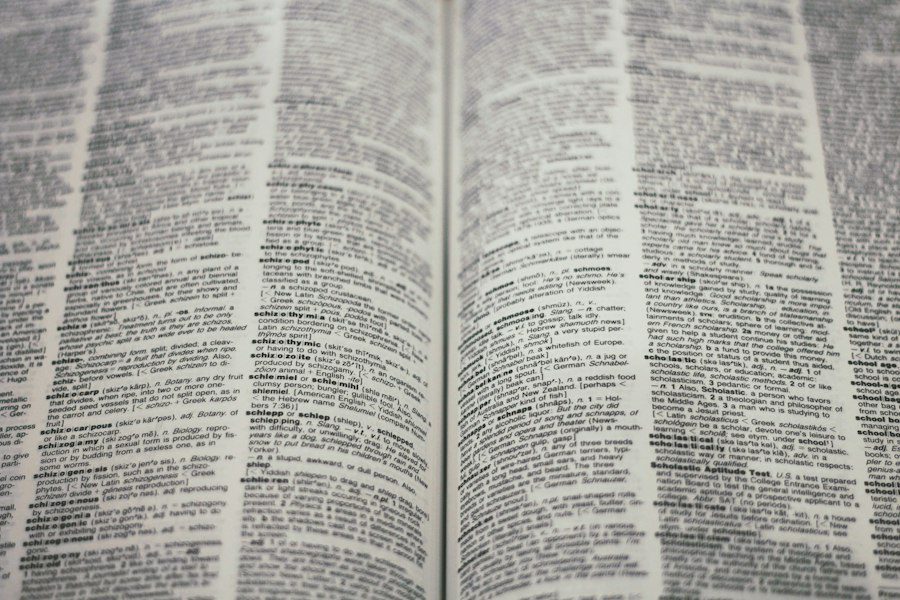The Dharuk language is an Indigenous Australian language that was spoken by the Dharug people, who are the traditional owners of the land now known as Sydney. The language is part of the Yuin-Kuric language family, which includes several other Indigenous Australian languages. The Dharuk language holds great significance as it is not only a means of communication but also a repository of cultural knowledge and identity.
Preserving endangered languages like Dharuk is crucial for several reasons. Firstly, language is an integral part of a community’s cultural heritage and identity. When a language becomes extinct, it represents the loss of a unique way of understanding and interacting with the world. Secondly, language plays a vital role in maintaining intergenerational connections and passing down traditional knowledge. Without the ability to speak their ancestral language, younger generations may lose touch with their cultural roots and traditions.
Key Takeaways
- Dharuk is an indigenous language spoken by the Dharug people of Australia.
- The language has a rich history and is believed to have been spoken for thousands of years.
- Dharuk was once widely spoken in the Sydney region, but today it is considered endangered with only a few speakers left.
- The language has unique linguistic characteristics, including a complex system of verb conjugation and noun classification.
- Efforts are being made to revitalize the Dharuk language through language classes, cultural programs, and community initiatives.
History and Origins
The Dharuk language has its origins in the Yuin-Kuric language family, which is one of the largest language families in Australia. This language family includes several other Indigenous Australian languages such as Gamilaraay, Wiradjuri, and Bundjalung. These languages share certain linguistic features and are believed to have diverged from a common ancestor.
The historical context of the Dharuk language is closely tied to the colonization of Australia by European settlers. With the arrival of the British in 1788, there was a significant disruption to Indigenous Australian communities and their languages. The forced displacement, violence, and cultural assimilation policies implemented by the colonizers had a devastating impact on Indigenous languages, including Dharuk. As a result, many Indigenous Australians were discouraged or prohibited from speaking their native languages, leading to a decline in fluency and usage.
Geographic Distribution
The Dharuk language was traditionally spoken by the Dharug people, who inhabited the region now known as Sydney. The Dharug people were part of the larger Eora Nation, which encompassed several Indigenous groups in the Sydney area. The geographic distribution of the Dharuk language was primarily concentrated in the coastal areas of New South Wales.
The impact of colonization on the Dharuk language and its speakers was profound. The arrival of European settlers led to the displacement and dispossession of Indigenous Australians from their traditional lands. This disruption to their way of life had a direct impact on the transmission and usage of the Dharuk language. Many Indigenous Australians were forced to abandon their traditional languages and adopt English as a means of survival and assimilation.
Linguistic Characteristics
The Dharuk language, like other Indigenous Australian languages, has unique linguistic characteristics that set it apart from other languages around the world. One notable feature of the Dharuk language is its use of complex sound systems, including a wide range of consonants and vowels. These sounds are combined in intricate ways to form words and convey meaning.
Another characteristic of the Dharuk language is its use of grammatical features such as case marking and verb conjugation. These features allow speakers to indicate relationships between words and express different grammatical functions. Additionally, the Dharuk language has a rich system of noun classification, which categorizes objects based on their shape, size, or other characteristics.
Vocabulary and Grammar
The vocabulary and grammar of the Dharuk language are unique and reflect the cultural and environmental context in which it developed. The Dharuk language has a rich vocabulary for describing the natural world, including plants, animals, and landscapes. For example, there are specific words for different types of trees, birds, and rivers.
The grammar of the Dharuk language is characterized by its use of suffixes and prefixes to indicate tense, mood, and other grammatical features. Verbs are conjugated to match the subject and object of a sentence, and nouns are inflected to indicate possession or location. The Dharuk language also has a system of noun classification, which groups objects into different categories based on their shape, size, or other characteristics.
Writing System

The Dharuk language traditionally did not have a writing system. Like many Indigenous Australian languages, the Dharuk language was primarily an oral language, passed down through generations through storytelling, song, and ceremony. However, in recent years, efforts have been made to develop a writing system for the Dharuk language to aid in its preservation and revitalization.
The development of a writing system for the Dharuk language has been a complex process. Linguists and community members have worked together to create a system that accurately represents the sounds and grammar of the language. This has involved adapting existing writing systems, such as the Latin alphabet, and incorporating diacritic marks to represent specific sounds that do not exist in English.
Cultural Significance
The Dharuk language holds immense cultural significance for Indigenous Australian communities. It is not just a means of communication but also a repository of cultural knowledge, history, and identity. The Dharuk language is intricately tied to traditional practices and ceremonies, including storytelling, song, dance, and art.
The Dharuk language plays a vital role in maintaining intergenerational connections and passing down traditional knowledge. Elders are often the custodians of the language and hold valuable cultural knowledge that is transmitted through the spoken word. By preserving and revitalizing the Dharuk language, Indigenous Australian communities can ensure that their cultural heritage is preserved for future generations.
Current Status and Revitalization Efforts
The current status of the Dharuk language is classified as critically endangered. There are very few fluent speakers of the language remaining, and the majority of them are elderly. The decline of the Dharuk language can be attributed to several factors, including colonization, forced assimilation, and the loss of traditional lands and cultural practices.
Efforts to revitalize the Dharuk language and promote its use have been underway in recent years. These efforts involve collaboration between linguists, community members, and educational institutions. Language revitalization programs have been established to teach the Dharuk language to younger generations and encourage its use in everyday life.
Challenges Facing the Preservation
Preserving endangered languages like Dharuk is not without its challenges. One of the main challenges is the lack of fluent speakers and intergenerational transmission. With very few fluent speakers remaining, there are limited opportunities for younger generations to learn and practice the language. This makes it difficult to maintain fluency and ensure the long-term survival of the language.
Another challenge is the impact of language loss on Indigenous Australian communities. When a language becomes extinct, it represents a loss of cultural diversity and knowledge. Indigenous Australian communities rely on their languages for cultural expression, identity, and connection to their ancestral lands. The loss of a language can have profound social, emotional, and spiritual consequences for these communities.
Importance of Preserving Endangered Languages like Dharuk
Preserving endangered languages like Dharuk is crucial for several reasons. Firstly, language preservation is essential for maintaining cultural diversity and promoting understanding between different communities. Each language represents a unique way of understanding and interacting with the world, and losing a language means losing a valuable perspective.
Secondly, preserving endangered languages is vital for maintaining intergenerational connections and passing down traditional knowledge. Language is not just a means of communication but also a repository of cultural knowledge, history, and identity. By preserving endangered languages like Dharuk, Indigenous Australian communities can ensure that their cultural heritage is preserved for future generations.
In conclusion, the Dharuk language is an Indigenous Australian language that holds great significance for the Dharug people and their cultural heritage. Preserving endangered languages like Dharuk is crucial for maintaining cultural diversity, promoting understanding between different communities, and passing down traditional knowledge. Efforts to revitalize the Dharuk language and promote its use are underway, but there are challenges to overcome. Supporting language preservation efforts is essential to ensure that languages like Dharuk continue to thrive and contribute to the rich tapestry of human culture.
If you’re interested in learning about endangered languages, you might want to check out this article on the Dharuk Language. It provides a fascinating insight into the unique features and cultural significance of this indigenous Australian language. Click here to read more about it.
FAQs
What is Dharuk Language?
Dharuk Language is an extinct Australian Aboriginal language that was spoken in the Sydney area of New South Wales, Australia.
When was spoken?
Dharuk Language was spoken before the arrival of Europeans in Australia, from approximately 1788 to the early 19th century.
Who spoke ?
Dharuk Language was spoken by the Dharug people, who were the traditional owners of the land in the Sydney area.
Is still spoken today?
No, Dharuk Language is an extinct language and is no longer spoken today.
What is known about ?
Dharuk Language is known to have had a complex grammar system and a rich vocabulary. It is also known to have had a significant influence on the English language, with many words from Dharuk being adopted into Australian English.
How is being preserved?
Efforts are being made to preserve and revive Dharuk Language, including through the use of written records and the teaching of the language to new generations. There are also ongoing efforts to document and record the language for future generations.
